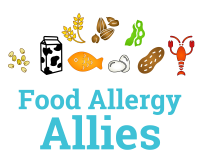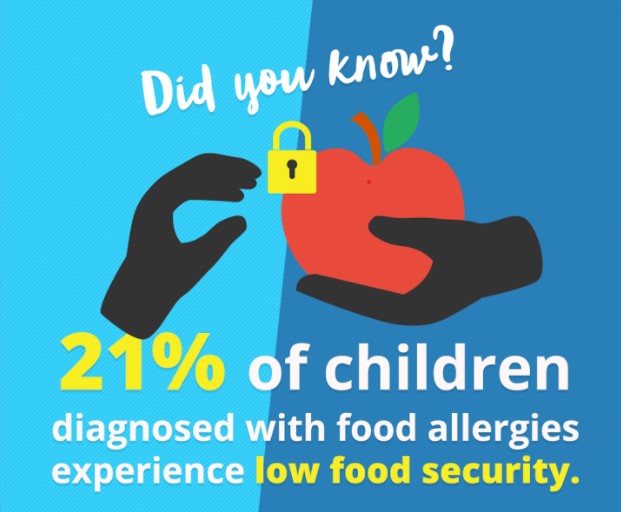Emily Brown was your average American mom living in Kansas city with her two year old daughter who was allergic to peanuts, eggs, dairy, wheat, and soy. The extra cost of healthcare and special food meant that this family was forced to turn to meal assistance programs from local food pantries. With so many allergies, the only food offered that would be safe for her daughter was a jar of salsa and a bag of potatoes. Gluten free or dairy alternatives are simply not an option at busy food pantries that can barely find enough food to feed people with regular diets, let alone kids with food allergies.
Emily’s story is not uncommon. Most charitable and federal food programs have extremely limited options in terms of food allergies. Oftentimes, clients cannot even pick out their own food, but are rather given pre-selected bags filled with food that may or may not work for people with allergies. Even if food assistance programs do offer safe foods, they are likely not adequate alternatives to typical foods. In the case of Emily, salsa and potatoes were the only option. In other cases, the alternatives offered do not work for people with multiple food allergies (i.e. almond butter might be offered instead of peanut butter for people with a peanut allergy… but many people are allergic to both peanuts AND tree nuts). Finally, meal services, reduced price school lunches, and soup kitchens are also nearly impossible for food allergy sufferers due to the risk of cross contamination.
Ironically, while food allergy and celiac friendly foods are so difficult to find at food pantries and meal programs, people with food allergies may actually be more likely to face food insecurity. The cost of safe foods is typically way more than the cost of regular foods (dairy milk vs “exotic” plant based milk for example) and the cost of epinephrine (the lifesaving medicine necessary for allergic reactions) is sky high. A singule epinephrine autoinjector can cost anywhere from $150 to $700! On top of that, add on the cost of asthma medication, hospital visits, and extra doctors appointments to the allergist. Food allergies are expensive, making it easier to fall into food insecurity and harder to find your way out.
People with food allergies or celiac disease deserve more representation at food pantries and meal programs. Food Allergy Allies has identified this problem and we aim to address it each and every day! Think about the last time you participated in a food drive- the suggested list of food donations probably listed nonperishables such as peanut butter, canned tuna, mac and cheese, and granola bars. Every single one of those items contains at least one allergen. It’s no wonder there are nearly no safe alternatives at food pantries! The next time you volunteer at a food pantry, consider donating some top-9 allergen free nonperishables to help support the Food Allergy Allies mission.
Article Sources:

